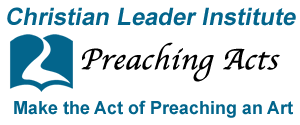Great Sermons Reflect Practice
Great Sermons Reflect Practice
The past series of posts dealt with illustrations. Now we turn to the key to moving your sermon from good to great: practice. Great sermons reflect practice by the one delivering it.
Car Buyers’ Remorse
 I hate buying used cars, largely because of a bad experience many years ago. I believed a salesman’s pitch about the car I was looking at. He said that everything was in great condition. After all, it only had 31,000 miles on it. I only took the car on a drive for a few blocks, and bought it. Unfortunately, over the next few weeks I found that things didn’t work as advertised. On day 2 the brakes went. In the second week of ownership, it began to leak coolant. After several more difficulties, we received a call from a law enforcement officer who told us that the people who sold us the car were being sought for the crime of turning back odometers on cars, and so, we were the victims of crime.
I hate buying used cars, largely because of a bad experience many years ago. I believed a salesman’s pitch about the car I was looking at. He said that everything was in great condition. After all, it only had 31,000 miles on it. I only took the car on a drive for a few blocks, and bought it. Unfortunately, over the next few weeks I found that things didn’t work as advertised. On day 2 the brakes went. In the second week of ownership, it began to leak coolant. After several more difficulties, we received a call from a law enforcement officer who told us that the people who sold us the car were being sought for the crime of turning back odometers on cars, and so, we were the victims of crime.
I think things could have been much different if we had driven the car more before buying it. A few years ago, we purchased a car with the agreement that we drove it for three days before making the purchase final. We gave it a good test, and have driven that car over 100,000 miles with little difficulty.
Trying Out Your Sermon with Practice
What does this have to do with your sermon? It’s best if you try out the sermon  well before the “performance” on Sunday. Great sermons reflect practice that the person presenting has put into it.
well before the “performance” on Sunday. Great sermons reflect practice that the person presenting has put into it.
A month ago, I preached a sermon in the last church I served. I was invited back as the pastor emeritus to fill in on an open date. Afterward a pastor who was visiting came up and asked how I did it. I didn’t use notes, and I didn’t use a “pulpit” or stand. He was impressed, he said, with how directly the message hit him, how I held his attention.
Our conversation was short, so I didn’t get to say to him what I say to you now. The message was what it was largely because I practiced it 5 times before I got up to preach it that morning.
You see, once you choose a theme or Scripture passage, focus on a big idea, identify illustrations that will make the message sing, and write the message, you still need to practice the message. Remember that great sermons reflect practice.
Great Sermons Reflect Practice, Practice, Practice
Here’s the reality: a spoken message is very different from a written one. As you speak through your message, you will identify things that just don’t work as well in a spoken message as they did in the written form.
So, how do you go about effective practice?
I suspect that it might be different for each person, but here are some general ways to spend your time, remembering, as Brandon Hilgemann put it in his book,  Preaching Nuts and Bolts, “There is no such thing as a perfect sermon, But practice will definitely make you better.” Here’s his list:
Preaching Nuts and Bolts, “There is no such thing as a perfect sermon, But practice will definitely make you better.” Here’s his list:
- Read your message out loud.
- Practice with some notes.
- Practice without notes to see how much you remember.
- Practice on the stage you will preach on.
- Practice in front of a mirror to watch your body language, gestures and eye contact.
- Practice in front of a few people to get feedback.
- Practice with a coach or mentor to critique you and offer advice.
- Practice in front of a camera so you can watch yourself and make corrections.
An Example Of Great Sermons Reflect Practice
Here’s how I go about rehearsing my message.
Making the Powerpoint: This usually happens on Thursday in a regular week. I take my manuscript and go through the message, creating the words and pictures that will be on the screen. These are important, because the powerpoint will be a clue for me on how the message will flow.
First Run-through: On Fridays I’ll do a first run-through of my message. This usually takes me a little more than an hour. I start with the introduction. I go through it over and over until I have all the relevant information in my head and can do the introduction smoothly. Then, I go through each point the same way, repeating it until I can do each section relatively smoothly.
During this time I check to see how well the ideas flow. Sometimes new ideas will come to me in the process, or I’ll think of an illustration that will better make my point more effectively. I’ll make the changes as I go.
Saturday: I usually run through the message twice on Saturday, once in the morning, and again in the late afternoon or evening. In this process, I continue to make improvements in the wording and in the flow of the ideas.
Sunday Morning: Early Sunday morning I do a final run-through. By this point I’m pretty comfortable with the ideas that I have developed. I use the powerpoint as my guide and make final corrections.
That’s one example. Here’s the reality again: Great sermons reflect practice and more practice.



